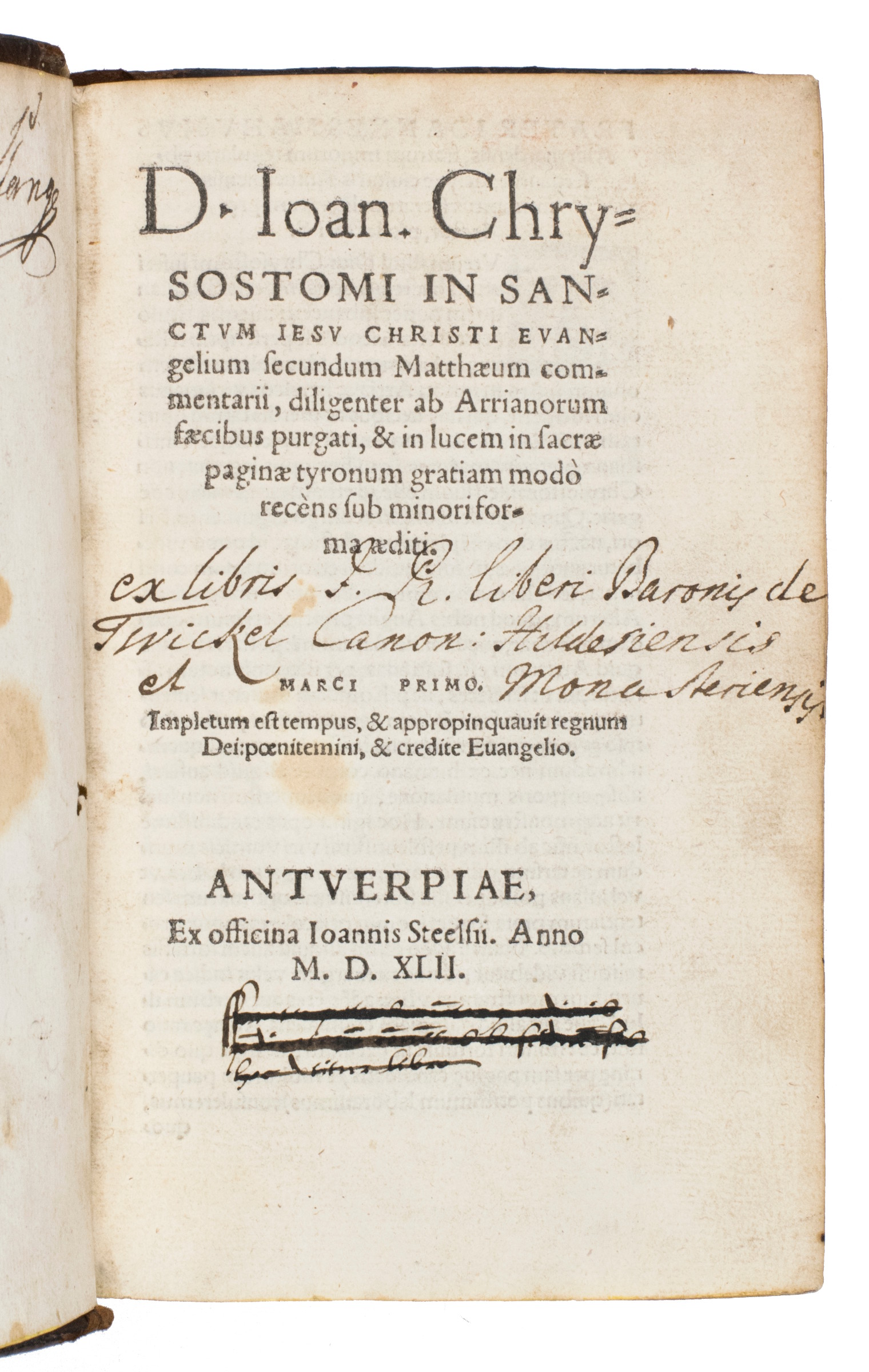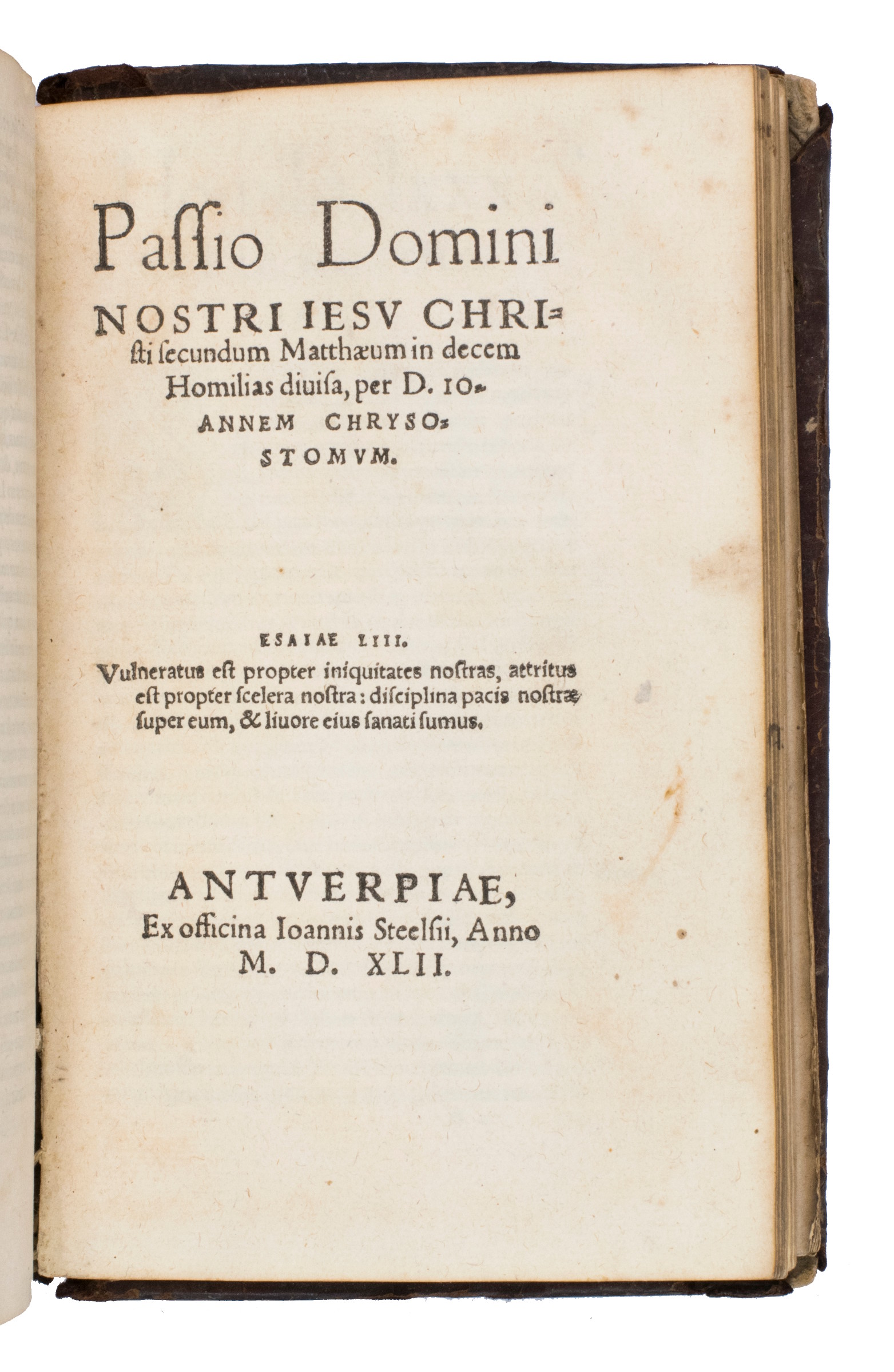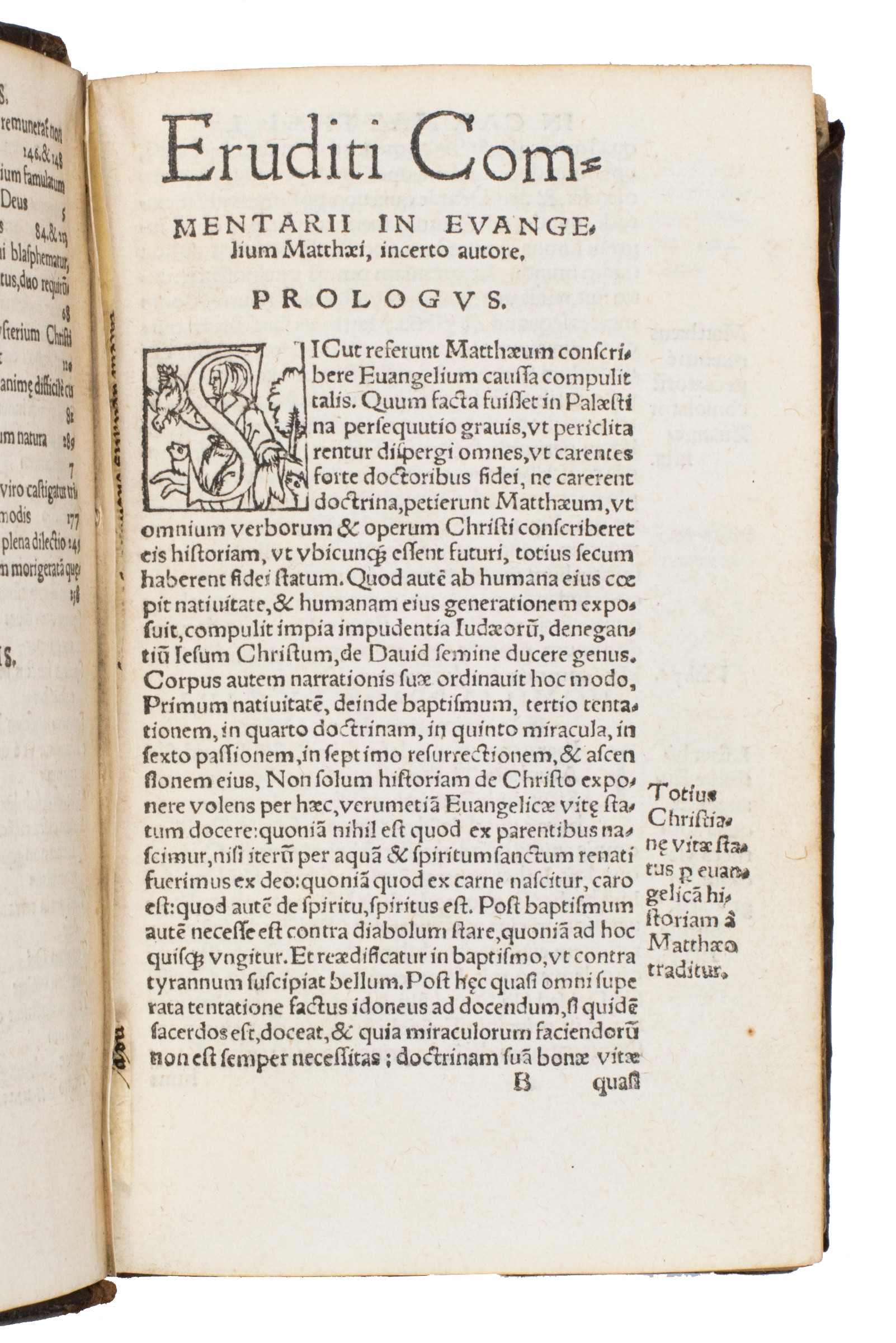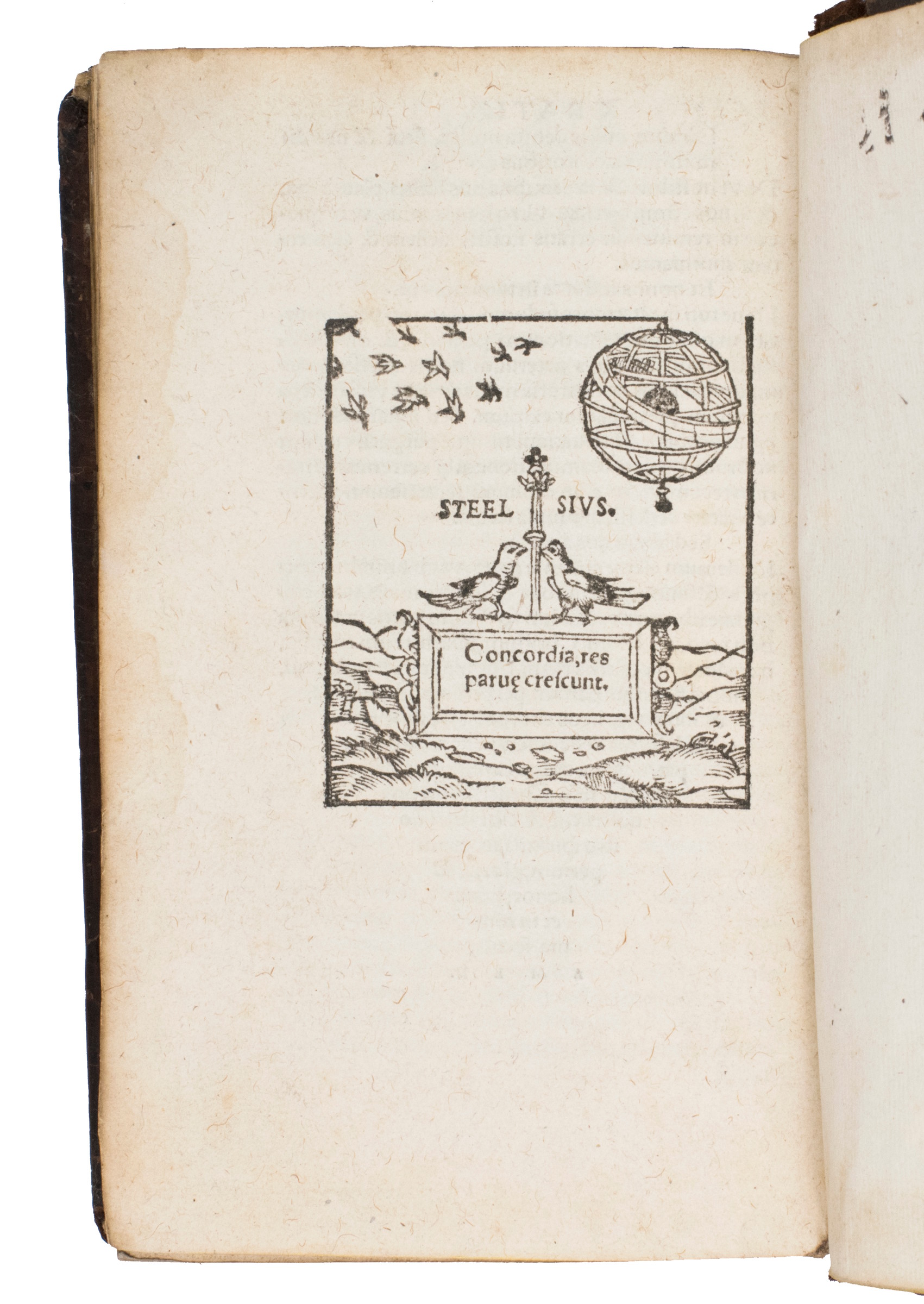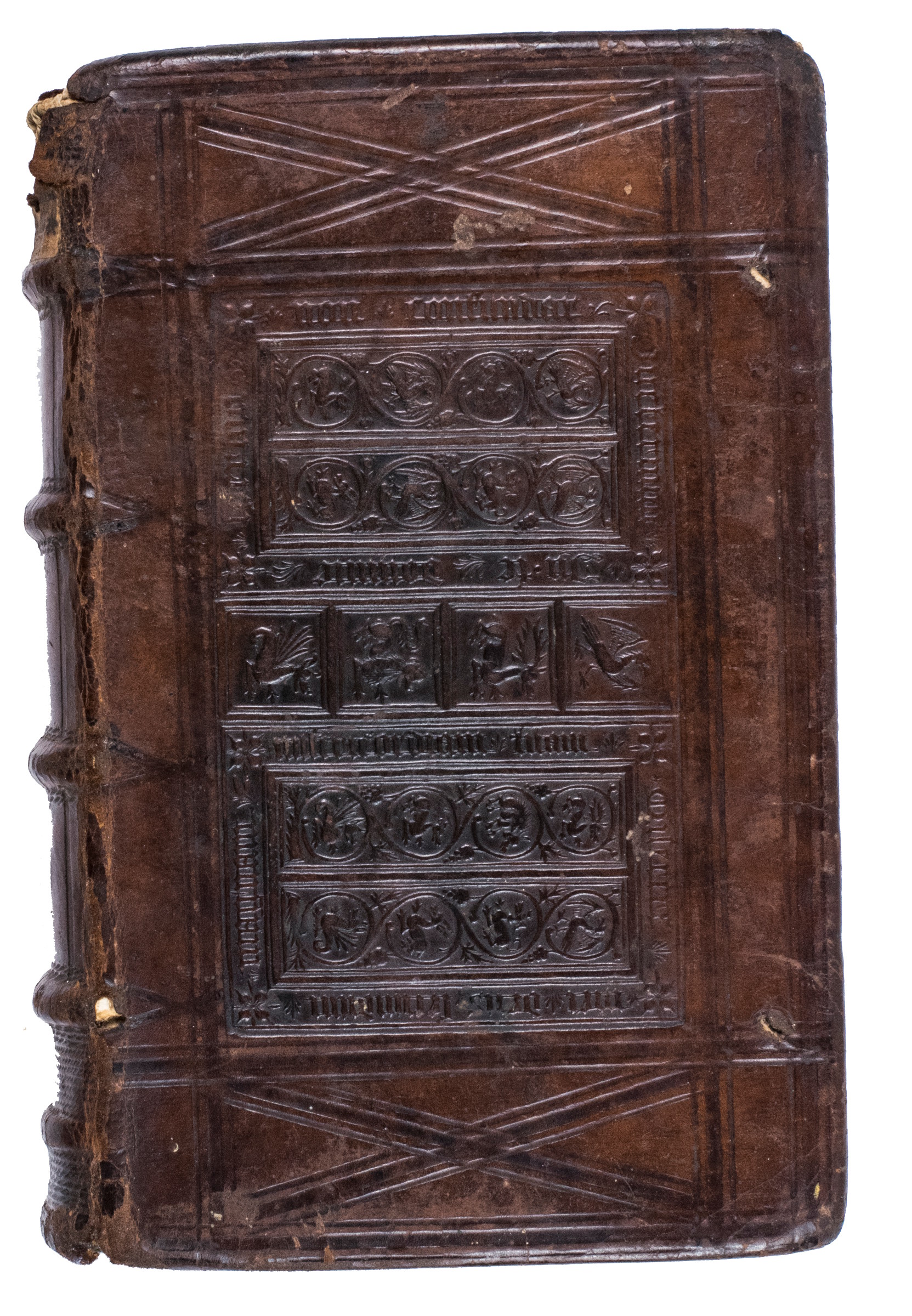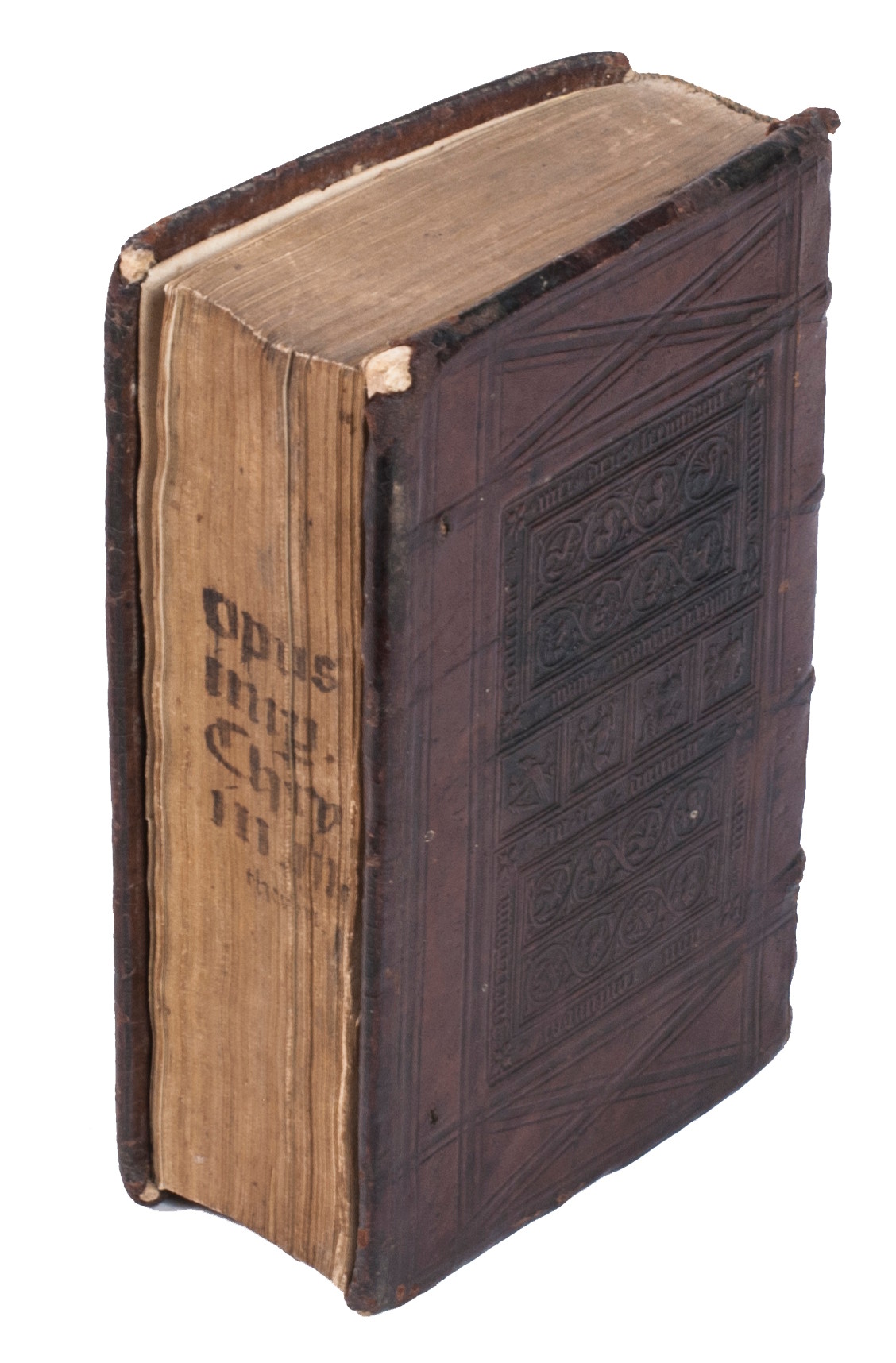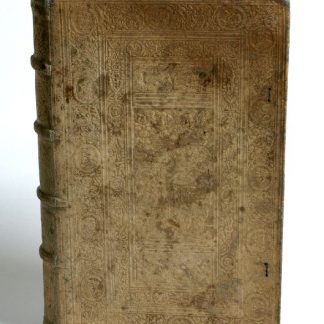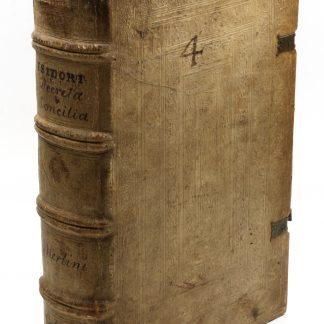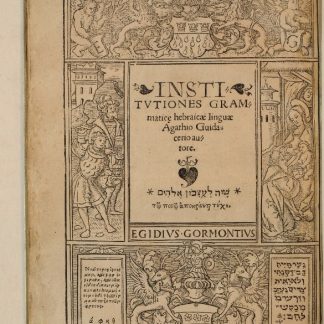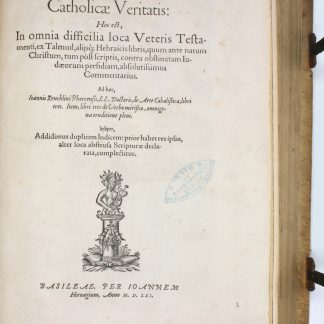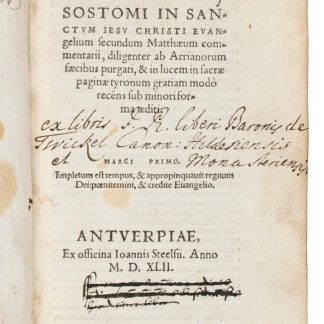Rare 1542 edition of one of the most important works of St John Chrysostom
In sanctum Jesu Christi evangelium secundum Matthaeum commentarii, diligenter ab Arrianorum faecibus purgati, & in lucem in sacrae paginae tyronum gratiam modo recens sub minoriforma aediti.
8vo. (8), "313" [but: 314], (1) ff. With two woodcut initials and a large woodcut printer's device on the last page.
(Bound with) II: The same. Passio Domini Nostri Iesu Christi secundum Matthaeum in decem Homilias divisa. Ibid., 1542. 47, (1) ff. With a woodcut initial on the first leaf. Contemporary Flemish blind-tooled calf with small handwritten title label to spine, handwritten title and author to fore-edge.
€ 9.500,00
Rare second edition of a devotional work by St John Chrysostom (347-407 CE). The contents of this second edition are more extensive than those of the first, published five years earlier, which only contains the first two thirds of the work. The final third was published separately as "Passio Domini" in 1542 and then added to this edition. The present work is very rare on the market.
John Chrysostom, archbishop of Constantinople, was an important early Church Father. His epithet "Chrysostomus", "golden-mouthed", denotes his eloquence. He was venerated as a saint shortly after his death and is remains important in the Eastern Orthodox Church. He was known for his public speaking talent and was also one of the most prolific writers of early Christianity. Although some of his works were published in the original Greek from 1526 onwards, they spread earlier and more widely in Latin translation; his writings continued to be translated and published throughout the 16th century.
Chrysostom wrote numerous religious works, but is known especially for his homilies and commentaries. The current work contains his homilies of St Matthew, which Baur calls one of his best and most important texts. It strongly influenced Armenian Christianity and is read and studied to this day. The homilies were very likely intended as sermons and delivered to the congregation of a church by the author himself.
The design of the binding is typically Flemish. While multiple bindings from the same time period with very similar panel stamps are known, this binding is unique: not only is it larger, but it also has extra blind-tooling around the edges that other bindings lack. Most importantly, the text on the stamp is different: while all the other bindings are stamped with a line from Psalm 130, here it is Psalm 70. This variation is not mentioned in any of the reference works.
With an owner's inscription on the recto of first flyleaf ("Publia in ... res sibi .. & regina"), another on the verso of the first flyleaf ("J Stange"), and two on the title-page ("ex libris F. R. liberi Baronis de Twickel Canon. Hildesiensis et Monasteriensis"), the other crossed out.
2 works in 1 volume. 8vo. (8), "313" [but: 314], (1) ff. With two woodcut initials at the beginning of the introduction and the prologue, of 2 different series, and a large woodcut printer's device on the last page, showing a staff, surrounded by doves and the text 'Steelsius', within a plaque 'concordia, res parue crescunt'.
(Bound with) II: The same. Passio Domini Nostri Iesu Christi secundum Matthaeum in decem Homilias divisa. Ibid., 1542. 47, (1) ff. With a woodcut initial on the first leaf. Contemporary Flemish blind-tooled, panel-stamped calf, with a tripartite panel on both sides and remnants of ties. The panel consists of 2 larger stamps on the head and foot, showing 8 animals surrounded by foliage, and in the middle a frieze with 4 mythical beasts. The upper part of the panel is surrounded by the following text: "in te domini speravi non confundar in aeternum". The lower part of the panel is surrounded by the following text: "misere mei deus secundum misericordiam tuam". On the back board, the same panel appears upside down. The panels are set in two triple-fillet frames, with two triple fillet lines crossing diagonally above and below the panels on both boards. The spine has blind-tooled single fillet lines running vertically and rope imprints running horizontally along the ribs. Sewn on 4 supports, with 6 raised bands (a false one at both the head and foot) and a small manuscript title label on the spine. Further with the manuscript title and author on the fore-edge.
The blind-tooling on the boards is very crisp and clear. Some loss of leather, mainly at the head of the spine (exposing the headband and a small portion of the sewing) and the corners of the back board. The pastedowns are missing, showing the boards and the manuscript waste used to reinforce the spine (also visible between ff. 40 and 41 in II, Passio Domini). Small brownstains on the first flyleaf and title-page, occasional slight browning, otherwise in good condition.
I: Adams C 1531. Belg. Typ. 1608. STCV 12916258 (3 copies). USTC 408234 (15 copies, only 8 with a known shelfmark). WorldCat 69054696, 312713362, 901134465, 67580012, 69058371 (13 copies).
II: Adams C 1533. Belg. Typ. 6076. STCV 12923552 (1 copy). USTC 408266 (16 copies, only 8 with a known shelfmark). For the author cf. Baur, Catholic Encyclopedia VIII, “St. John Chrysostom"; for the binding: Fogelmark, Flemish and related panel-stamped bindings, pp. 32-44; Goldschmidt, Gothic & Renaissance Bookbindings, p. 216, plate 45.

